Sandra Cisneros and the Macondo Writers’ Foundation by Juliana Aragon Fatula
by Bethany Maines
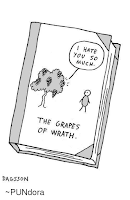 As I plug away toward the ending on my latest WIP
As I plug away toward the ending on my latest WIPThe setting of a book is a critical part of a story. Location
can determine the mood before opening the first page. A big city will feel
different than a coastal village, or a domestic setting versus one abroad. As a
cozy writer, my location is pre-determined since the majority of cozy mysteries
take place in small, idyllic towns. But even within these parameters, there are
several options.
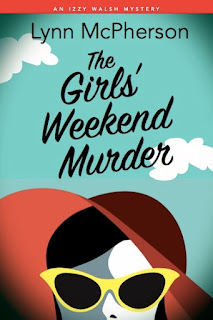 In my Izzy Walsh
In my Izzy WalshLynn McPherson has worked for the Royal Canadian Mounted Police, ran a small business, and taught English across the globe. She has travelled the world solo where her daring spirit has led her to jump out of airplanes, dive with sharks, and learn she would never master a surfboard. She now channels her lifelong love of adventure and history into her writing, where she is free to go anywhere, anytime. Her cozy series has two books out: The Girls' Weekend Murder and The Girls Whispered Murder.
I love reading. I love mysteries. I love my imagination.
When I read a book, even though the author describes the characters and the scenery, it is my imagination that makes it a film playing in my head while I’m enjoying the ride. I hear the voices and their pronunciation. I see the outfit. I see them. It’s my imagination when they tilt their head this way and that. My film always stays true to the book that I’m reading.
I’ve seen TV-movies made of books that I enjoyed and have been disappointed in the changes they made to my film version and the book. Not a good sign for me.
Luckily if I see a TV-movie based on a book that I have not read, I’m more likely to enjoy the movie.
What say you? Have you liked TV-movie adaptation of books you’ve enjoyed?
–Dru Ann
When I was writing my historical novel, Noah’s Wife, I realized my central character had Asperger’s Syndrome. At first, I rejected the idea, but a wiser part of my mind prevailed, and I let her be who she was. I added researching the condition to my digging into the ancient Mid East culture, geology, and archeological findings that shaped the background for my novel about the wife of Noah.
Na’amah’s disabilities turned out to be strengths I never suspected, and I wrote in the author notes that I thought it was possible we were looking at this condition from a prejudiced and skewed perspective.
Maybe we all carry genes that can express these abilities and difficulties in various ways, and they are part of our evolutionary inheritance. I thought I was going out on a limb, so stumbling on this video (link below) about neurodiversity was of great interest. Maybe we need to take another look at how we define what it means to be human.
https://www.youtube.com/watch?v=aWxmEv7fOFY
~T.K.
By Cathy Perkins
Have you heard about the latest scandal rocking RomanceLandia?
A woman has been caught lifting sentences, paragraphs, pages from multiple (up
to 20 and counting) authors and stringing them together into a new book.
Copy. Cut. Paste.
Plagiarism.
I thought about this while I walked the dogs and see the following spectrum from the benign to the terrible.
How many times have we seen that phrase as to what an
agent/publisher wants? It’s why tropes are so popular in RomanceLandia: friends
to lovers; secret baby. The mystery world has its own familiar plots. The
protagonist who races to save the world before the villain takes over/destroys it.
The serial killer; can the hero stop him before he kills again? The small-town
heroine who a body and must investigate to remove herself from the prime
suspect position.
Shoot, I’m part of a Common Elements Project where we’re all
given the same five required elements, and then told Go!
What makes all of these “work” is each author will tell the
story in a different way, with their unique voice.
So, the same…but different.
This may be every author’s secret fear. Or maybe it’s just
mine.
I read. A lot.
There’s always the concern a story’s clever phrase has
tucked away in a memory cell and will reappear in a similar fashion on my page.
I can’t point to a particular phrase—if I recognized it, I’d change it—but I fear
it could happen. I remember reading—somewhere—that this is more common than
expected. Or maybe the point of the article was it happens a lot more than we
realize.
But, again, I stress it’s inadvertent.
Stealing. Deliberately.
Plagiarism hurts authors at a deeper level than the whack-a-mole,
steal-a-book in a “free” download sites. Those sites and the people who use
them are stealing from authors financially.
Plagiarism takes an author’s soul.
Words we’ve sweated over, melded into scenes to convey action, character and
theme are casually stolen with no thought to the crafting that underlies them.
And worse, it’s done with full knowledge of the theft.
One of the authors impacted by Serruya is a friend—Courtney
Milan. She’s written a post about her experience and her reaction. Because the
hurt is so personal, I won’t presume to tell you about it. Instead, I urge you
to read her words.
Authors – Have you worried about the inadvertent? Found your
work ripped off?
Readers – Have you read something you felt was a little too close
to something else you’ve read?
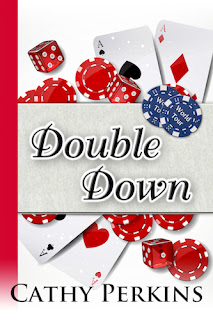
On a completely different note, I put DOUBLE DOWN on sale this
week because it’s my birthday and I like to share (legally).
DOUBLE DOWN is the
second book in the Holly Price series, written because readers wanted to see
events from Detective JC Dimitrak’s perspective.Murder
isn’t supposed to be in the cards for blackjack dealer Maddie Larsson. Busted takes on a new meaning when her favorite customer, a
former Poker World Tour champion, is murdered. His family claims—loudly and
often—Maddie is the gold-digging murderer. She better prove she’s on the level
before the real killer cashes in her chips.
If the victim’s body had been dumped five hundred yards up
the road, Franklin County Sheriff’s Detective JC Dimitrak wouldn’t have been
assigned to the Tom Tom Casino murder case. Instead, he’s hunting for suspects
and evidence while dealing with a nemesis from the past and trying to preserve
his own future. He better play his hand correctly and find the killer before an
innocent woman takes the ultimate hit.
Find it here from your favorite store. books2read.com/DoubleDown
And because I forgot to put it on my calendar, HONOR CODE is
also on sale this weekend, with a group promo.
In a small southern town
where everyone normally knows each other’s business, veteran detective Larry
Robbins must solve the disappearance of eighty-year-old widower,
African-American George Beason.
When evidence arises that Beason may have left town on his
own, it would be easy for Robbins to close the case, but his gut instinct tells
him more’s at stake. As he uncovers clues about Beason’s deceased wife and his
estranged daughter, Robbins must untangle conflicting motives and hidden
agendas to bring Beason home alive.
HONOR CODE hit #1 in its category at release and the most
recent fraud alert says another 5000 people downloaded it off a steal-a-book site
this month. You can pick up a copy here or here.
Happy Reading!
By
Kay Kendall
by J.M. Phillippe
In October of 2018, some friends of mine and I met up at a shelter on the Upper East Side in Manhattan to look at cats. The giant, brand new ASPCA shelter was closed down for reasons the website wasn’t sharing, so we were at another city shelter — along with everyone else, it seemed. I met up with my friend, let’s call her J, and her two teenage twin daughters. The girls immediately went to look at all the animals, and were already getting misty eyed about the ones that might not be going home with anyone.
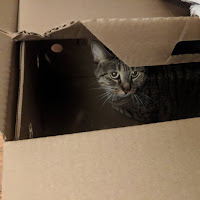 But me, I was on a mission: I wanted to get a bonded pair of kitties, one of them possibly being black since I’ve heard that black cats are still harder to adopt out. (Though it seems that this may be a myth, there were a lot of black kitties up for adoption.) I wasn’t sure if I wanted kittens or adult cats, but I knew I wanted cats under the age of six. I was still grieving the loss of my beloved Oscar, and wasn’t ready to take on senior kitties that maybe had health issues.
But me, I was on a mission: I wanted to get a bonded pair of kitties, one of them possibly being black since I’ve heard that black cats are still harder to adopt out. (Though it seems that this may be a myth, there were a lot of black kitties up for adoption.) I wasn’t sure if I wanted kittens or adult cats, but I knew I wanted cats under the age of six. I was still grieving the loss of my beloved Oscar, and wasn’t ready to take on senior kitties that maybe had health issues.
But while there were lots of tags talking about bonded kitties, it was soon obvious that the shelter wan’t actually focused too much on keeping them together. I was told by a volunteer that if both cats seemed social, bonded pairs would be separated and adopted out individually, in order to give them their best chance at being adopted. I was also told that if you wanted to get a kitten you’d better show up early, much earlier than we had.
So we wandered around trying to find what I was looking for, and I was starting to think I was going to go home with a single cat (since, unless they are bonded, most shelters won’t let you adopt two adult cats at once).
Then, the teen girls spotted them: two kitties, stuck in the less glamorous cages in the middle of the hallway, where the “special case” cats were. Two cats, whose cages had been connected, were curled up together, their backs to the world, their ears flat, trying everything they could to get away from anyone who tried to look at them. They were so terrified that the shelter volunteers draped towels over their cages to give them some privacy.
They were the only intact bonded pair in the place, and one of them was a black kitty. Here! the teen girls said. We found what you were looking for!
The problem was, they were too scared to do any sort of visitation, and too scared to even try to say hello to without hissing. Adopting these two cats would be adopting complete unknowns.
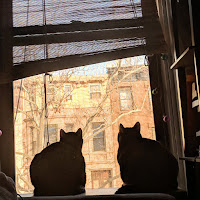 A couple I kept seeing around looking at kitties pulled me aside. Are you looking at those two cats? They are our second choice. We’d be really happy to see them go to a happy home. They are very sweet — we can tell!
A couple I kept seeing around looking at kitties pulled me aside. Are you looking at those two cats? They are our second choice. We’d be really happy to see them go to a happy home. They are very sweet — we can tell!
So now I was getting big teenage girl eyes, and mopey couple eyes (they ended up going with a pair of cats that had some health issues and couldn’t be taken home that day), and these two cats who scrambled at the back of their cages when I tried to say hi to them.
So, of course, I adopted them. Brooklyn, a tabby, and Savannah, a black kitty.
The only thing the shelter could tell me was that they were owner surrendered and about four years old. Good health — a little overweight, and some teeth issues typical of their age.
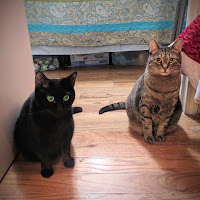 The teen girls and my friend helped me carry them home to Brooklyn, no small feat while holding two cardboard carriers that had to be held just so or they might fall apart. When I got them home, they stayed in their open boxes until the next day, when they found hiding places in the living room. I consulted a friend who fosters cats who said to take them out of their hiding places and put them in the bathroom — the living room was going to be too much for them. I did, and it was a traumatic event for all three of us.
The teen girls and my friend helped me carry them home to Brooklyn, no small feat while holding two cardboard carriers that had to be held just so or they might fall apart. When I got them home, they stayed in their open boxes until the next day, when they found hiding places in the living room. I consulted a friend who fosters cats who said to take them out of their hiding places and put them in the bathroom — the living room was going to be too much for them. I did, and it was a traumatic event for all three of us.
Eventually, after trying to figure out if I should change their names, I landed on calling them nicknames of their original names: B.K. for Brooklyn, and Savvy for Savannah. Slowly, they started to come out more, and spend time near me more, and eventually even let me pet them more.
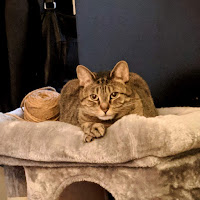 When I went to make sure their microchips were transferred over correctly in my name, I found out that they were listed as lost. The shelter had updated all my information, but hadn’t updated their status. I found out they were born in 2014, and listed as lost in 2015, and then owner surrendered to the shelter on their birthday in 2018. As far as what happened to them in between or what their lives were like, I have no idea. Savvy startles at the sound of an opening can. Maybe that means something, maybe not. Both do not like to be picked up (yet). It’s been four months and they are just now able to sit either on my lap or curled up next to me, and they still run away if I walk in their direction. Maybe this is all about the trauma of being relocated. Maybe they are just naturally more skittish than some cats. Maybe something I will never know about happened to them.
When I went to make sure their microchips were transferred over correctly in my name, I found out that they were listed as lost. The shelter had updated all my information, but hadn’t updated their status. I found out they were born in 2014, and listed as lost in 2015, and then owner surrendered to the shelter on their birthday in 2018. As far as what happened to them in between or what their lives were like, I have no idea. Savvy startles at the sound of an opening can. Maybe that means something, maybe not. Both do not like to be picked up (yet). It’s been four months and they are just now able to sit either on my lap or curled up next to me, and they still run away if I walk in their direction. Maybe this is all about the trauma of being relocated. Maybe they are just naturally more skittish than some cats. Maybe something I will never know about happened to them.
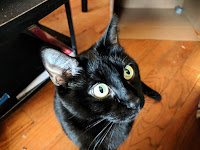 In the meantime, we keep working on building trust together. In a weird way, I feel like we are all working through grief together, me getting over the death of the cat I had before them, them getting over the humans they had before me. Bonding wasn’t instantaneous for any of us, with me learning to love them as unique creatures over time and getting used to their specific personalities. Savvy plays fetch and curls up next to me in the bed but is more shy of strangers. B.K. is more curious and brave in general, and likes to sleep by my legs — she wouldn’t let me touch her the first month, but so far is the only one of the two who can tolerate being on my lap.
In the meantime, we keep working on building trust together. In a weird way, I feel like we are all working through grief together, me getting over the death of the cat I had before them, them getting over the humans they had before me. Bonding wasn’t instantaneous for any of us, with me learning to love them as unique creatures over time and getting used to their specific personalities. Savvy plays fetch and curls up next to me in the bed but is more shy of strangers. B.K. is more curious and brave in general, and likes to sleep by my legs — she wouldn’t let me touch her the first month, but so far is the only one of the two who can tolerate being on my lap.
I still wonder — and probably always will — about the life they left behind. But I am very glad that we all found each other, even when their sibling rivalry acts up, or they meow loudly in the night just for attention. Theirs is the kind of mystery I can learn to live with.
by
Paula Gail Benson
And, don’t let me
finish without saying, I heart each of YOU!
